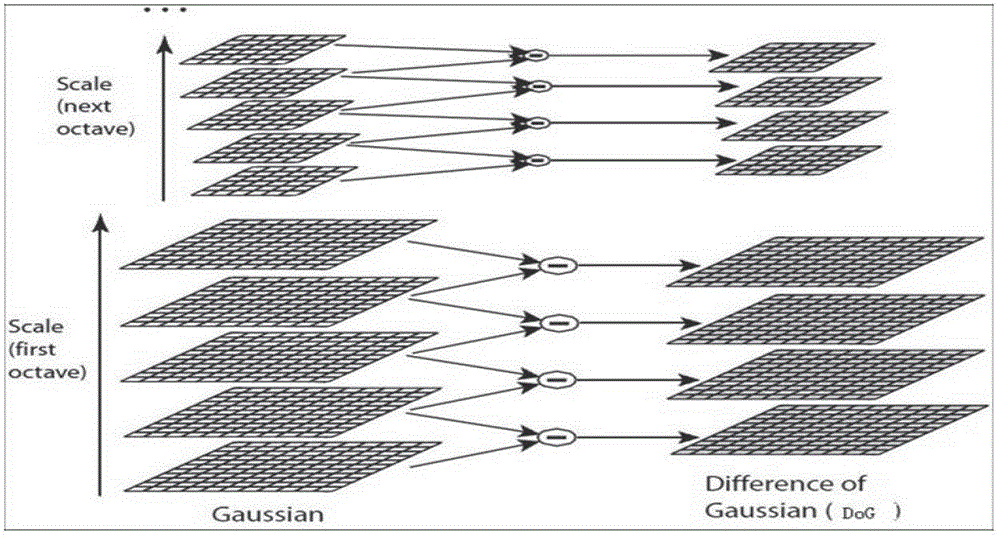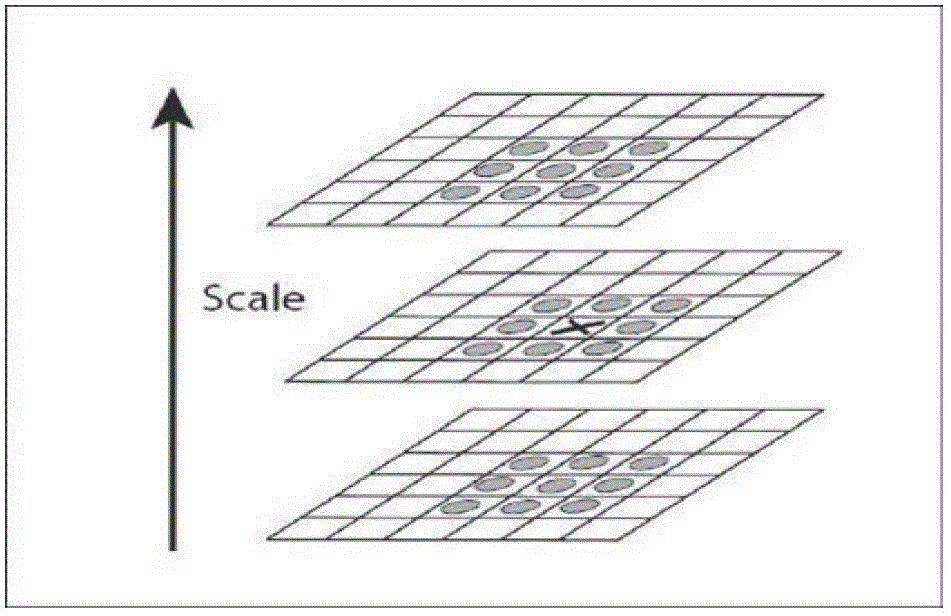Method for identifying traffic sign
A traffic sign recognition and direction designation technology, applied in the field of traffic sign recognition, can solve problems such as difficult to deal with environmental lighting changes, occlusion and geometric deformation, unable to guarantee real-time performance of the system, and high false positive rate, so as to facilitate the identification of color and space The effect of location features
- Summary
- Abstract
- Description
- Claims
- Application Information
AI Technical Summary
Problems solved by technology
Method used
Image
Examples
Embodiment 1
[0050] Such as figure 1 As shown, a kind of traffic sign recognition method that the present invention proposes, comprises the following steps:
[0051] Step S1: Obtain the input image to be matched;
[0052] Step S2: Extract key points from the image in the template image library and the image to be matched according to the SIFT algorithm, and specify directions for the key points;
[0053] The SIFT algorithm has the following steps:
[0054] 1. Detect extreme points in the scale space;
[0055] 2. Extract stable key points;
[0056] 3. Specify the direction for each key point;
[0057] 4. Generate feature point descriptors.
[0058] In this embodiment, step S2 determines the key point according to the SIFT algorithm. The specific method is the same as the content disclosed in the SIFT algorithm recorded in the non-patent literature 2 mentioned in the background art body. The specified direction for the key point is specifically the sampling histogram method as the key p...
Embodiment 2
[0068] In this embodiment, the collected traffic signs are used as images stored in the template image library, and based on this, the method for performing traffic sign recognition on the image to be matched is as follows:
[0069] 1. Extract key points from the image in the template image library and the image to be matched
[0070] In step 101, a difference of Gaussian scale space (DoG) is established to find extreme points.
[0071] The purpose of scale space theory is to simulate the multi-scale characteristics of image data. For a two-dimensional image, the scale space representation at different scales can be obtained by convolving the image with a Gaussian function: L(x, y, σ)=G(x, y, σ)*I(x, y). In the formula, (x, y) represents the pixel position of the image; L represents the scale space of the image; σ is the scale space factor, the smaller the value, the less the image is smoothed, and the smaller the corresponding scale; the symbol * represents volume product;...
PUM
 Login to View More
Login to View More Abstract
Description
Claims
Application Information
 Login to View More
Login to View More - Generate Ideas
- Intellectual Property
- Life Sciences
- Materials
- Tech Scout
- Unparalleled Data Quality
- Higher Quality Content
- 60% Fewer Hallucinations
Browse by: Latest US Patents, China's latest patents, Technical Efficacy Thesaurus, Application Domain, Technology Topic, Popular Technical Reports.
© 2025 PatSnap. All rights reserved.Legal|Privacy policy|Modern Slavery Act Transparency Statement|Sitemap|About US| Contact US: help@patsnap.com



